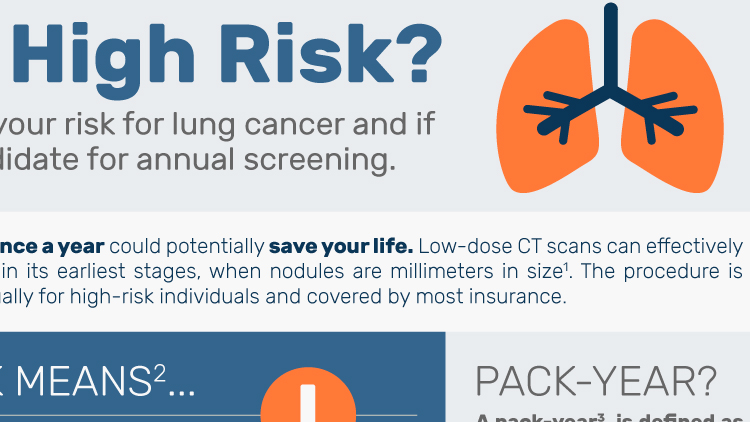BRISTOL MYERS SQUIBB FOUNDATION
The paradigm shift
Screenings are the biggest news in lung cancer detection in half a century
The best defense against lung cancer is arrestingly simple. If a nodule is discovered early, it can be cut out If it is cut out—before it spreads—your chance of surviving five years jumps from 4 percent to 55 percent. If you continue with annual screenings, your odds improve even more.
“Screening is going to make the difference between life and death for many people,” says Tara Schapmire, a co-investigator for Kentucky LEADS.
Early detection and surgery are the closest thing we have to a cure for one of the deadliest cancers on record. The success of early detection through screening is among the biggest advancements in lung cancer treatment since the U.S. Surgeon General’s report linked smoking with the disease more than 50 years ago.
“Lung cancer screening is the first major innovation in lung cancer prevention and control since 1964,” says Jamie Studts, Kentucky LEADS principal investigator. “It creates a unique opportunity to contribute to a dramatic change in lung cancer survivorship.”
A national lung cancer screening trial of more than 50,000 people recently found that a low-dose CT scan can effectively detect lung cancer in its earliest stages, when nodules are millimeters in size. The procedure shows better resolution than an X-ray but is quicker, less expensive and less invasive than an MRI, making it a viable option for ongoing annual screenings, the recommendation for high-risk individuals.
High-risk individuals are defined as those between the ages of 55 and 80 who have a history of smoking at least a pack per day for 30 years (or two packs per day for 15 years) and continue to smoke or have quit smoking within the past 15 years. As of 2015 in the U.S., screenings may be covered by healthcare insurance for those who meet these high-risk parameters.
Screenings can reduce the public burden of lung cancer tremendously, but only if they’re widely available. That’s why Kentucky LEADS is working with healthcare systems throughout the state to ensure high-quality screening is accessible in rural communities, not just urban hospitals. The program equips rural providers with the tools, software and training to offer quality screenings.
However, the program’s biggest obstacle may be educating qualifying individuals to embrace screening as a process, not an event.
“Screening is only effective if you adhere to it on an annual basis,” says Angela Criswell, a field coordinator for Kentucky LEADS, “because you have a baseline with which to compare future scans, to look for any changes.”
The Kentucky LEADS Collaborative—Lung Cancer Education, Awareness, Detection and Survivorship—is funded by the Bristol Myers Squibb Foundation as part of the Bridging Cancer Care initiative to expand the limited scope of community-based resources and survivorship support programs to underserved populations in the U.S. Kentucky LEADS addresses the full spectrum of lung cancer care with three main components: provider education, survivorship care and early detection. Through early detection, Kentucky LEADS is facilitating the implementation of high quality lung cancer screening in healthcare systems throughout the state.



